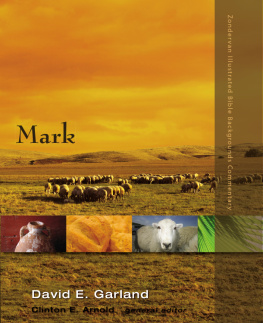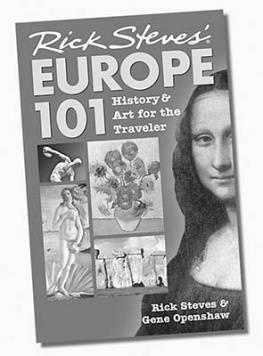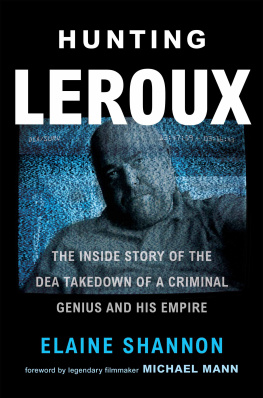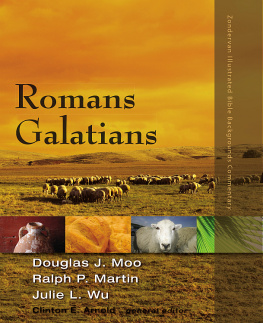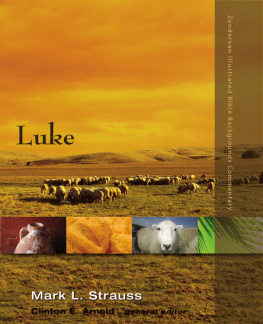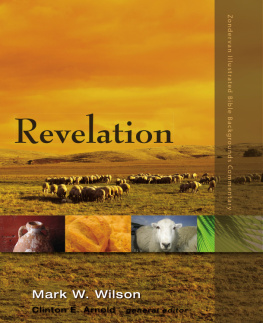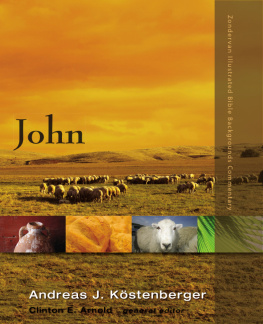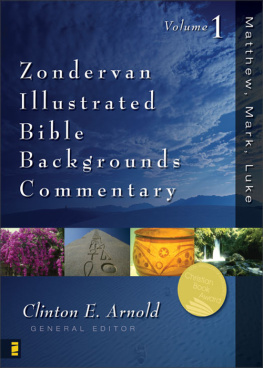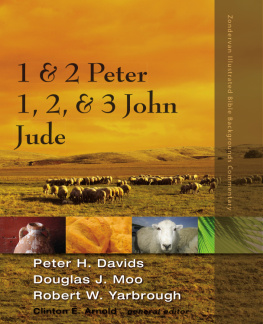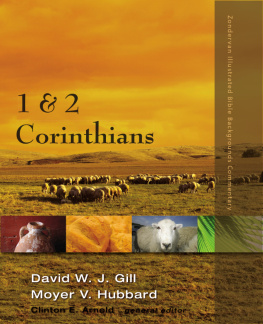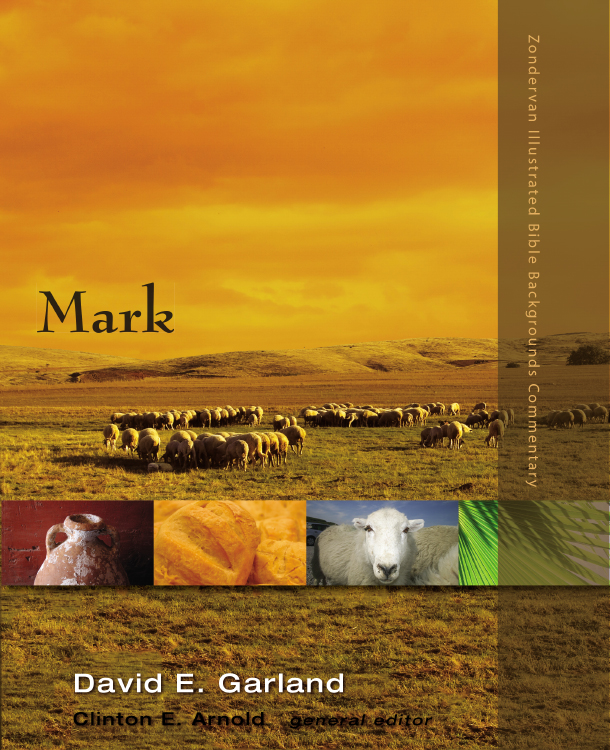Clinton E. Arnold (Ph.D., University of Aberdeen), professor and chairman, department of New Testament, Talbot School of Theology, Biola University, Los Angeles, California
David E. Garland (Ph.D., Southern Baptist Theological Seminary), associate dean for academic affairs and professor of Christian Scriptures, George W. Truett Theological Seminary, Baylor University, Waco, Texas
Zondervan Illustrated Bible Backgrounds Commentary
Mark
Clinton E. Arnold
GENERAL EDITOR

ZONDERVAN
Mark
Copyright 2002 by David E. Garland
Previously published in Matthew, Mark, Luke
All rights reserved under International and Pan-American Copyright Conventions. By payment of the required fees, you have been granted the non-exclusive, non-transferable right to access and read the text of this e-book on-screen. No part of this text may be reproduced, transmitted, downloaded, decompiled, reverse engineered, or stored in or introduced into any information storage and retrieval system, in any form or by any means, whether electronic or mechanical, now known or hereinafter invented, without the express written permission of Zondervan.
ePub Edition April 2016: ISBN 978-0-310-53015-2
Requests for information should be addressed to:
Zondervan, 3900 Sparks Dr. SE, Grand Rapids, Michigan 49546
The Library of Congress catalogued the printed edition as follows:
Zondervan illustrated Bible backgrounds commentary / Clinton E. Arnold, general editor.
p. cm.
Includes bibliographic references.
Contents: v. 1. Matthew, Mark, Luke-v. 2. John, Acts-v. 3. Romans to Philemon-v. 4. Hebrews to Revelation.
ISBN 9780-31021806-7 (v. 1)ISBN 978-0-310-21807-4 (v. 2)ISBN 978-0-310-21808-1 (v. 3)ISBN 978-0-310-21809-8 (v. 4)
1. Bible. N.T. Commentaries. I. Arnold, Clinton E.
BS2341.52.Z66 2001
225.7-dc21 2001046801
All Scripture quotations, unless otherwise indicated, are taken from The Holy Bible, New International Version, NIV. Copyright 1973, 1978, 1984 by Biblica, Inc. Used by permission. All rights reserved worldwide.
Any Internet addresses (websites, blogs, etc.) and telephone numbers in this book are offered as a resource. They are not intended in any way to be or imply an endorsement by Zondervan, nor does Zondervan vouch for the content of these sites and numbers for the life of this book.
All rights reserved. No part of this publication may be reproduced, stored in a retrieval system, or transmitted in any form or by any meanselectronic, mechanical, photocopy, recording, or any otherexcept for brief quotations in printed reviews, without the prior permission of the publisher.
Contents
David E. Garland
What is the difference between an eBook and a print book?
eBook versions contain all the content and supplementary materials found in the original print versions and are optimized for navigation in the various apps and devices used for display. eReaders recognize text as one fluid string and are formatted in a single column, which differs from the multi-column layout seen in many print version books. Therefore, some content may not match the exact appearance of the original print version, but instead uses hyperlinks to navigate between related content.
How do I use the features of this ebook?
*Important Note: Be sure to consult your device manufacturers Users Guide for device-specific navigation instructions.*
The .
The ebook edition for this title contains a special , which contains the full text of the book(s) of the Bible that are the topic of this commentary.
To navigate to specific Bible books, chapters, or verses from the , please note the following:
Book links (Ex. Genesis) go directly to the beginning of that Bible book.
Chapter links go directly to the beginning of the chapter associated with a book.
Use the devices Next Page/Previous Page buttons or functions to scroll through the verses in each chapter.
Every Bible book and chapter hyperlink in the Bible text returns or goes back to the full chapter listing at the beginning of the . Or, use the devices back button or function to go back to the last selection.
Throughout the main text, all Scripture references to the Bible text that appears in the are hyperlinked to the specific chapter or verse referenced. Use the devices back button or function to go back to the last selection.
Footnotes are marked with small, hyperlinked superscript numbers 1.
Select the hyperlinked superscript number in the main text to go to the corresponding footnote.
Select the hyperlinked number to the left of the footnote(s) and you are returned to the main text, or use the devices back button or function to go back to the last selection.
All readers of the Bible have a tendency to view what it says through their own culture and life circumstances. This can happen almost subconsiously as we read the pages of the text.
When most people in the church read about the thief on the cross, for instance, they immediately think of a burglar that held up a store or broke into a home. They may be rather shocked to find out that the guy was actually a Jewish revolutionary figure who was part of a growing movement in Palestine eager to throw off Roman rule.
It also comes as something of a surprise to contemporary Christians that cursing in the New Testament era had little or nothing to do with cussing somebody out. It had far more to do with the invocation of spirits to cause someone harm.
No doubt there is a need in the church for learning more about the world of the New Testament to avoid erroneous interpretations of the text of Scripture. But relevant historical and cultural insights also provide an added dimension of perspective to the words of the Bible. This kind of information often functions in the same way as watching a movie in color rather than in black and white. Finding out, for instance, how Paul compared Christs victory on the cross to a joyous celebration parade in honor of a Roman general after winning an extraordinary battle brings does indeed magnify the profundity and implications of Jesus work on the cross. Discovering that the factions at Corinth (I follow Paul I follow Apollos ) had plenty of precedent in the local cults (I follow Aphrodite; I follow Apollo ) helps us understand the why of a particular problem. Learning about the water supply from the springs of Hierapolis that flowed into Laodicea as lukewarm water enables us to appreciate the relevance of the metaphor Jesus used when he addressed the spiritual laxity of this church.
My sense is that most Christians are eager to learn more about the real life setting of the New Testament. In the preaching and teaching of the Bible in the church, congregants are always grateful when they learn something of the background and historical context of the text. It not only helps them understand the text more accurately, but often enables them to identify with the people and circumstances of the Bible. I have been asked on countless occasions by Christians, Where can I get access to good historical background information about this passage? Earnest Christians are hungry for information that makes their Bibles come alive.
The stimulus for this commentary came from the church and the aim is to serve the church. The contributors to this series have sought to provide illuminating and interesting historical/cultural background information. The intent was to draw upon relevant papyri, inscriptions, archaeological discoveries, and the numerous studies of Judaism, Roman culture, Hellenism, and other features of the world of the New Testament and to make the results accessible to people in the church. We recognize that some readers of the commentary will want to go further, and so the sources of the information have been carefully documented in endnotes.

